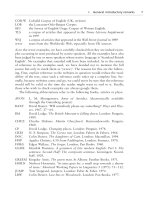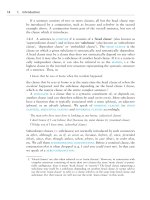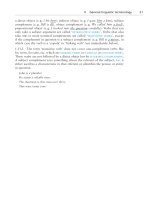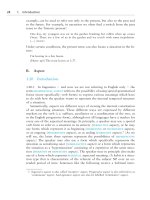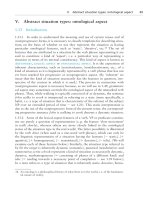English Verb patterns
Bạn đang xem bản rút gọn của tài liệu. Xem và tải ngay bản đầy đủ của tài liệu tại đây (11.51 KB, 1 trang )
Verb patterns
English sentences follow a certain pattern. There are several sentence patterns in English. You don’t have to
learn all of them, but you should be familiar with the most important ones. The best thing about sentence patterns
is that you can create thousands of sentences using just a few patterns.
Subject + transitive verb + direct object
A transitive verb is one that takes an object. The normal order of words in an English sentence is subject + verb +
object.
Subject Transitive verb Direct object
He likes children.
The teacher punished the boy.
The protestors invaded the platform.
The scoundrels were given a good thrashing.
The monk burnt himself.
The government should ban all militant organizations.
The object is a noun or a noun equivalent. It is the answer to the question ‘whom?’ or ‘what?’.
He likes whom? – children
The teacher punished whom? – the boy
The protestors invaded what? – the platform
The scoundrels were given what? – a good thrashing
Some verbs are not normally followed by objects. These are called
intransitive verbs
. Examples are: sit, sleep.
Although intransitive verbs cannot take objects, they can be modified by adverbs.
Please sit down.
The baby was sleeping on the bed.
He sat under the tree.
Subject + verb + object + adverb particle
Some verbs are followed by adverb participles. Examples are:
put on, take off, give away, bring up, call in
etc.
Sometimes the adverb particle is separated from the verb and put after the object.
Subject Verb Object Adverb particle
He put his coat on.
They called the doctor in.
The boy threw the ball away.
His grandmother brought him up.
You must send them back.
The adverb particle goes after the object, when the object is a personal pronoun, or when it is comparatively
short.
Be first to know when grammar rules change! Sign up to our newsletter here: englishgrammar.org (It's free)
Powered by TCPDF (www.tcpdf.org)


